how's that for a visual?-Just Lee now I think, 26, he/him, Floridian. follow me on cmaidaartworkblog (and also @Pr0totaxites on Twitter, *and* OnlyScarcelyScaly on Reddit) if you wanna see my art and whatnot-
Last active 60 minutes ago
Don't wanna be here? Send us removal request.
Text
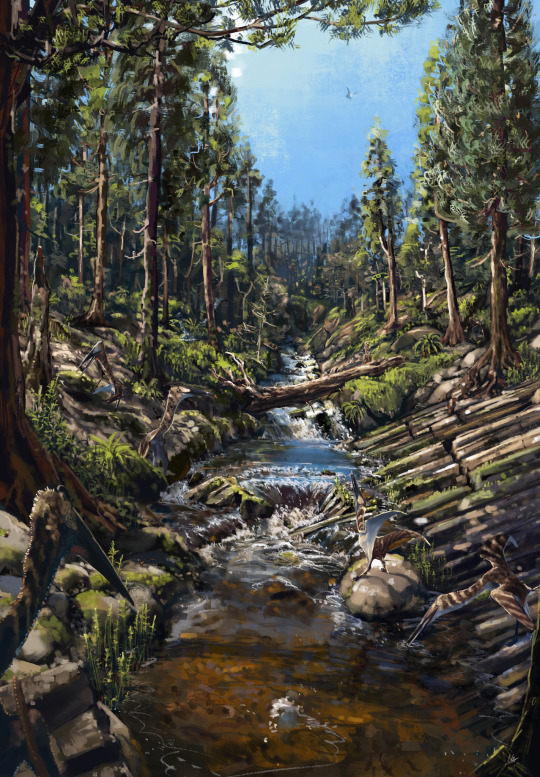
Juvenile fork-tailed waterwitch (Quetzalcoatlus lawsoni) forage among young greater waterwitch (Q. northropi) under the watchful eyes of the adult greaters. In this sheltered stream, both species coexist for the first few months of their lives before the forktails move downriver.
103 notes
·
View notes
Text
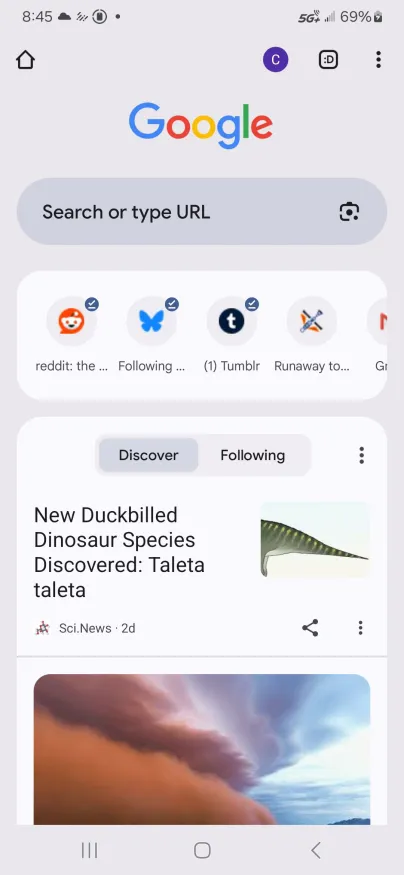

Just one day after sharing the maps of Talita's homeplanet, I go to open a new tab on my phone and see a headline about a dinosaur with a nearly identical name, twice: Taleta taleta. While the dinosaur's genus and species name come from an Arabic word for 3, and the Centaur alien character's name is, well, Portuguese, the similarity and timing still impressed me so much I started painting this as soon as I got home from work last night.
32 notes
·
View notes
Text
Pinned Post
Hi, I'm Jay Eaton, I draw a webcomic called Runaway to the Stars. I recommend reading it on its own site rather than tumblr!
Links:
My webcomic
My website
My Patreon
RttS Frequently Asked Questions
Upcoming Conventions:
BwPcon, June 7th in Portland, Oregon (this upcoming weekend!!!!)
Anthrocon, July 3rd-6th in Pittsburgh, Pennsylvania
DinoCon, August 16th-17th in Exeter, England
Biggest Little Fur Con, October 13th-16th in Reno, Nevada (waiting for application approval)
Comic Arts LA, December 14-15th in Los Angeles, California (plan to apply)
150 notes
·
View notes
Text
Here's what I've been up to lately! Three years after I created the original version, here's a revamp of the first planet I mapped out for @jayrockin's "Runaway to the Stars" project, the homeworld of their Centaur aliens. This post covers Phase One: Geology.



Firstly, the Equirectangular elevation maps with and without the color gradient layer, and tectonic plate map. This color gradient marks sea level, of course, and while there are inland areas that are *also* below that elevation, I have yet to determine which of those basins have lakes and seas therein, and how their shorelines compare; *that* will be seen once I figure out the climate : ) As for the Plate map, most of the smaller, oblong plates without any rift boundaries represent island chains or continent fragments that accreted onto larger landmasses; discretely marking those was helpful for placing and shaping the mountain ranges.



Next, the Poles-Centered Perspective maps, made possible with Photopea's Polar Coordinates tool. The planet's Southern hemisphere, centered on the south pole, is seen at left, and its Northern hemisphere is seen at right. Like the previous set of three, this set includes the color elevation map, greyscale elevation map, and solid color tectonic plates.


Last of all, the basis for the planet's current appearance: it's tectonic history! These gifs, in six frames, cover about 200 million years of continental drift, starting with the breakup of two Supercontinents, and was primarily achieved in Blender. This isn't my first time trying to reconstruct a tectonic history, but it *is* my first time doing so this quickly and efficiently, thanks to the process I developed here using this planet's continents as a test case.
There will be more phases in this project completed and shared in the coming months, thanks for checking out this one! Also, I've already shared these maps on Reddit, where you should be able to see them in even higher resolution. Photopea and Blender, 2025
670 notes
·
View notes
Text
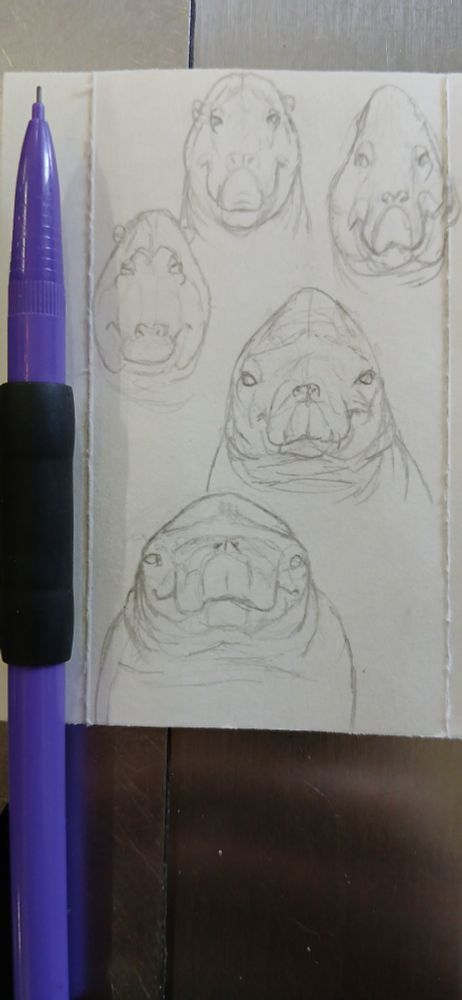
While I work on getting my major projects to a stage where I think they're worth sharing, here's some very loose sketches of five Archaeocetes staring straight down the camera, obviously looking most dignified from this angle. Drawn from memory, probably not quite accurate, nonetheless fun.
Mechanical pencil on paper from Reese's cup packaging, 2025
113 notes
·
View notes
Text

While I work on getting my major projects to a stage where I think they're worth sharing, here's some very loose sketches of five Archaeocetes staring straight down the camera, obviously looking most dignified from this angle. Drawn from memory, probably not quite accurate, nonetheless fun.
Mechanical pencil on paper from Reese's cup packaging, 2025
113 notes
·
View notes
Photo

Orc girl’s portrait with a grin (and a weird copper-adorned coat hanger thing). Spent a while painting her, a lot of which was dedicated to experimenting with fashion elements until just today. Digital painting (Photopea) May-June 2020 Link to higher resolution image here
11 notes
·
View notes
Text
🧹🌸 Happy Feaster! 🌸🧹



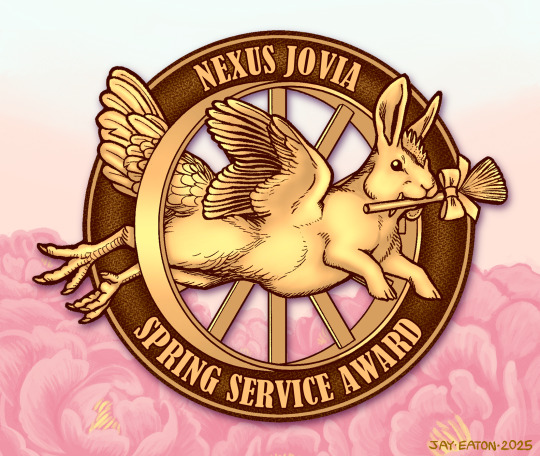
One of most influential national holidays in Jovia is Feaster, aka "Easter Feast." It is descended from the Christian holiday Easter, though it does not always fall on the same Sunday of the Terran solar calendar. Jovia's Christian minorities (mostly congregants of the Martian Church of Christ or Presbyterians) sometimes celebrate it as a religious holiday, but it has experienced secularization through its association with Spring Cleaning Week.
This week starts on the first Monday of April and is one of two compulsory maintenance weeks in the year for Jovian citizens. It focuses on the cleaning up of green spaces, biosystems, and microgravity farms in your place of residence; either the mega space station Nexus Jovia or one of the settlements on Jupiter’s moons. Jovian citizens are required to fulfill a minimum of 6 hours of maintenance during the first 6 days of the week unless they have a registered exemption, and there is generally a scramble in the week before as signups open and citizens try to get slots in some of the less exhausting or gross jobs. Easter Feast occurs on the final day of the week, and is a welcome break after the toil of the week. Many people with family on the Jovian system will travel to see them for Feaster, and Nexus Jovia is at its most crowded during this Spring holiday season.
Perhaps the most important part of Spring Cleaning Week is the rotating out of the microgravity farms. Old crops are harvested on mass and replanted, older livestock are culled and butchered, and the algae and yeast tanks are drained, sanitized, and recultured. This effectively makes Feaster an anomalous early spring harvest festival, but in a place with no natural seasons. Many of the microgravity crop varieties grow much longer (both in length and in time) than their terrestrial counterparts, being unrestrained by gravity, and are continuously harvested from lateral shoots and just under the apical meristem. Crops such as lettuce and Brassicas have exceptionally sturdy, long "canes" and are used to make Easter brooms. While these are technically a tool, most are a symbolic decoration for the holiday and elaborately adorned with ribbons and flowers. Households will often hang them on the door or over windows at their residence, as a representation of their service for the station. Particularly nasty maintenance tasks often give out fancy decorative brooms, molded metal or myla collectables, and other trinkets as a reward to citizens willing to undertake them. These prizes are often prominently displayed by those who receive them, for bragging rights.
Compulsory maintenance weeks have their root in Nexus Jovia's history as a small mining and research space station. Even as its population ballooned into the millions and it expanded to over a hundred kilometers wide, the ethos of the little station has carried forward: the only thing keeping a space station from killing its inhabitants is continual maintenance by its inhabitants. April Maintenance Week's nearness to Easter was originally a coincidence, but after chabbits, (also known as "Easter bunnies," a GMO pet that lays colorful eggs) were introduced and popularized as a space livestock, the two became associated. In modern Jovia, chabbits are a staple livestock prized for their eggs, meat, and manure. For many Jovians, Easter Feast is not complete without whole grilled chabbit at the center of the table.
1K notes
·
View notes
Text

Aquilops americanus
heard this guy is starring in a movie soon... i wish him luck
1K notes
·
View notes
Text
Finally got this Blender camera rig to ~kinda~ work! Now I just have to move this rig to the file with the actual hominin reconstructions, write and record a script, export several versions of the video with and without the skin and muscle, and edit all that together...by next week, maybe?
Not sure I can attach alt-text to the video itself so I'll paste it here: "A two minute screenrecording of a Blender scene, showing the camera moving counterclockwise in a wide orbit around a smaller half-ring of nine hominin skulls. Aside from these nine skulls there is a small sphere, two Nurbs Circles (which I'll call NC1 & NC2), two Bezier Circles (BC1 & BC2), and a camera. The camera is attached to BC1 like a pod on a Ferris wheel, and BC1 in turn rolls along the edge of NC1, the largest circle in this scene lying flat like a plate on a table. NC2 and BC2 are arranged much like the first set of circles, but scaled down to be about the same size as the ring of hominin skulls. Another difference is that where BC1 is set upright like a wheel, BC2 is set flat like both of the Nurbs circles. It is slightly oblong and raised on one end (like a pizza that fell on a curb) with the small sphere rolling along it. This sphere is what the camera is set to point at, allowing each skull to be in frame for the ideal amount of time and to be seen from more angles"
4 notes
·
View notes
Photo



This week on Runaway to the Stars: Talita does some TIG welding on an aluminum seam, Bip flexes their muscles, Yao sees something weird happening in the distance. Reblogs and word of mouth appreciated, because my account is still glitched and post notifications aren’t working for people who have them enabled :’) Catch up with pages on runawaytothestars.com! Read ahead on Patreon!
918 notes
·
View notes
Text
youtube
Had a little breakthrough with my Blender mapmaking process, and got so excited I made a video about it. I hope some of you will find this useful as a resource but ultimately I'm just overjoyed at how easy I've just made things for myself.
Enjoy!
8 notes
·
View notes
Text
some of the flocking sketches i've done in 3 months. it's not even all of them! 3 months isn't a lot of time, crazy to think that all it took is to simply draw 4 little pictures each friday night. i put them in order, and i think there's a bit of improvement here - i'm definitely more comfortable in experimenting with stuff. what a fun thing to do 🤍




















1K notes
·
View notes
Text




“Steeple”
“Tall Grass”
“Procession”
“Underbelly”
pictures i painted at 3 am
based on the photographs of @ briscoepark
2K notes
·
View notes
Text

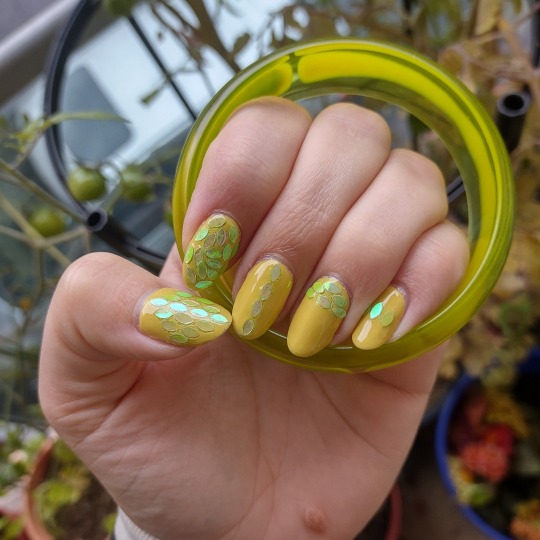
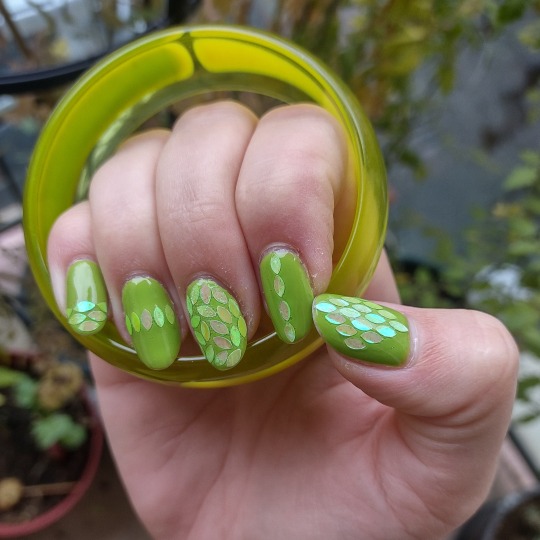

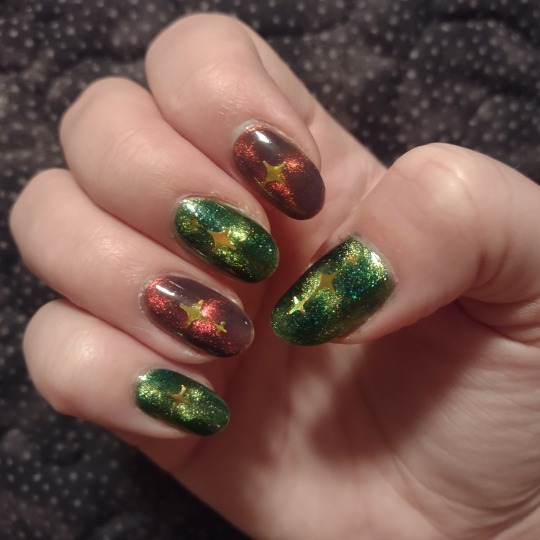

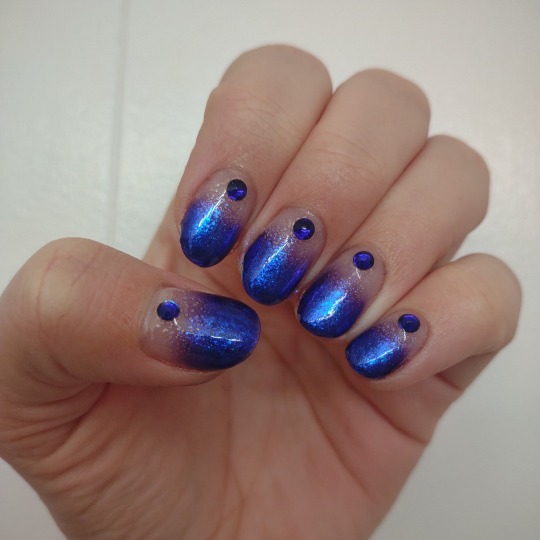
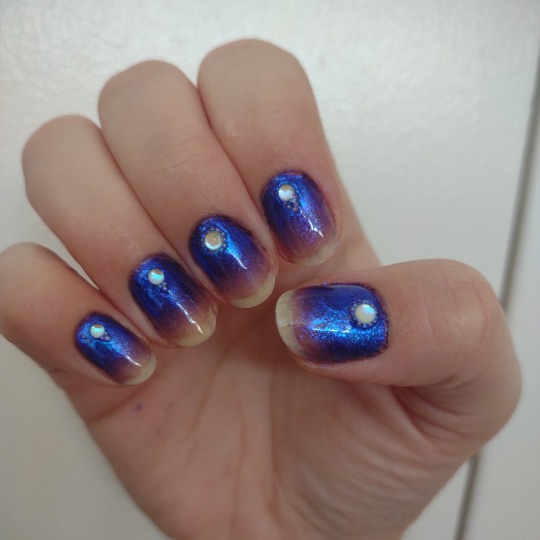


About 4 months of nail art. Sequin leaf pile, yellow green scales, magnetic night and Christmas, magnetic solstice suns, translucent cobalt with rhinestones, heart sequin blast.
314 notes
·
View notes
Text
Store Update


So sadly these got here way too late for holiday shopping, but I'm pleased to announce that there's two new merch items in my online store, baby Talita keychains and Bip pins! Two very different flavors of troublemaker, now both wearable.
Additionally, while I was busy grinding out chapter 6 for Patreon I sold out of, like, most of the books in my shop? So because I can't really afford to eat all of those reprinting costs at the same time, I'm doing reprint preorders. Order any of these books right now and they will be shipped to you in February 2025:

Growth Chart
Almost Real Volume 5: MYTHOLOGY
Almost Real Volume 5: MYTHOLOGY (with poster)
Airsled Color Edition
Character AMA Trio
That's all for now!
1K notes
·
View notes
Text
Motherships
Alt: in reality these vetulicolians are about 5cm long, they look like tadpoles that's been flattened on the sides, oval fish like 'head' silhouette with 5 round holes identified as gills on the side and segmented tail in the back that flattens out like a paddle. The oval head portion also tapers very thinly at the rim that they look like fins, the top part has a triangular pointy bit that looks like a shark's dorsal fin
These Cambrian oddities aren't vertebrates and the consensus seems to place them as stem chordates.
The video depicts them as large looming figures in murky water, with little brachiopods (bivalved shelles animals that's not a mollusk) in the foreground
1K notes
·
View notes